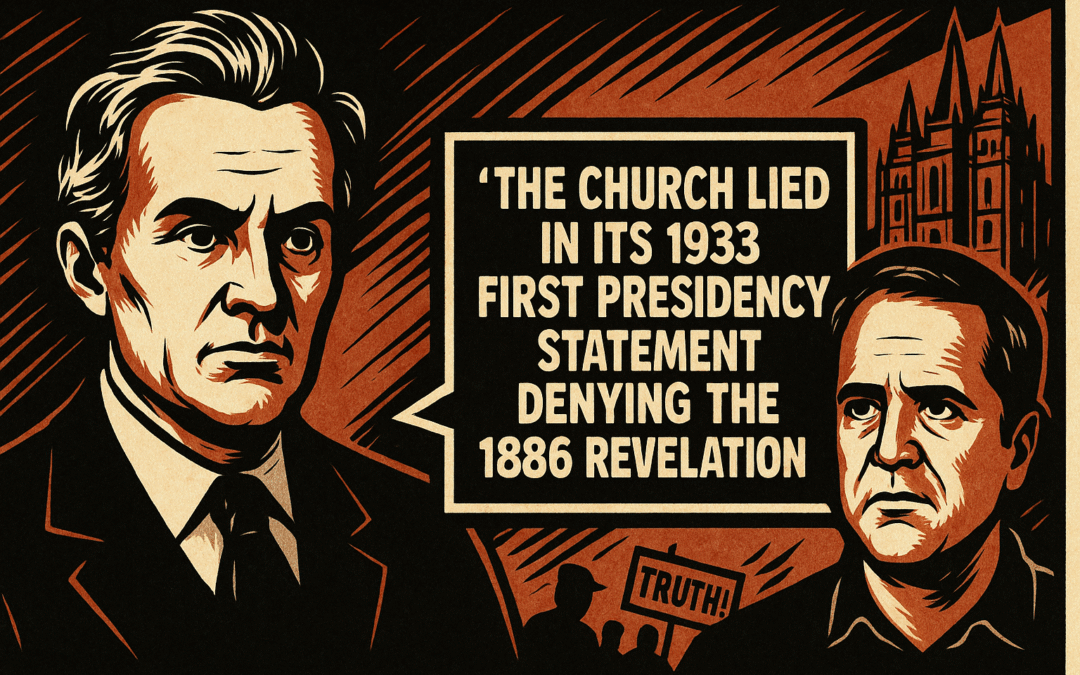1933 First Presidency Statement
Bottom Line
A poorly worded official statement isn’t proof of lies. Public policy is established by canon—not by retroactive accusations or ideological frustration. The Church lied in its 1933 First Presidency statement denying the 1886 revelation”
| Podcast | Mormon Stories – John Dehlin |
|---|---|
| Episode | “New Document Shows LDS Church Hid and Denied its own Prophet’s Polygamy Revelation” |
| Title | “The Church lied in its 1933 First Presidency statement denying the 1886 revelation” |
| Category | Institutional Transparency & Doctrine |
| Quote | “This is one of the biggest whoppers ever told by church leaders… Unambiguously this was a very terrible idea.” — Narrator, 01:21:37–01:21:55 |
| Timestamp | 01:21:37–01:21:55 |
| Core Claim | The Church knowingly lied about the 1886 revelation in the 1933 First Presidency statement. |
| Conclusion | False Accusation / Misleading Framing |
| Logical Questions |
|
🔍 Core Finding
The 1933 First Presidency statement, drafted by J. Reuben Clark, expressed skepticism about the doctrinal relevance of the 1886 revelation. While the phrasing may have downplayed its existence or status, there’s no verifiable evidence of intentional deceit.
The revelation was never canonized, never presented for common consent, and never treated as binding doctrine by the Church. Leaders are not required to treat every private document—however authentic—as public doctrine. The Church’s statements aimed to protect its position against schismatic interpretations, not hide scripture.
⚖️ Doctrine by Common Consent
- No revelation is binding until sustained by the Church as a whole (D&C 26:2).
- The 1886 revelation remained non-canonical for nearly 150 years.
- Canon omission ≠ coverup; doctrinal restraint is not deception.
📚 Sources
- First Presidency Statement on the 1886 Revelation – June 1933 (Church News Archive)
- Joseph Fielding Smith Typed Copy of 1886 Revelation – CHL
- Quinn, D. Michael. Extensions of Power (Signature Books), Chapters 6–8
- Mormoner.org – The 1886 Revelation: History and Impact

